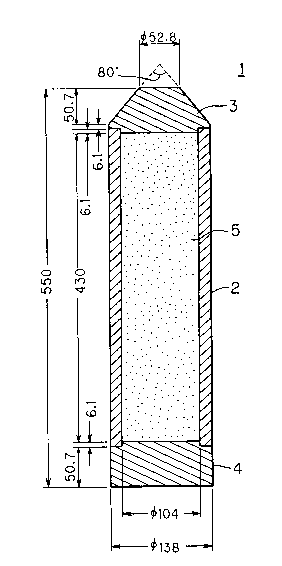Some of the information on this Web page has been provided by external sources. The Government of Canada is not responsible for the accuracy, reliability or currency of the information supplied by external sources. Users wishing to rely upon this information should consult directly with the source of the information. Content provided by external sources is not subject to official languages, privacy and accessibility requirements.
Any discrepancies in the text and image of the Claims and Abstract are due to differing posting times. Text of the Claims and Abstract are posted:
| (12) Patent: | (11) CA 2063283 |
|---|---|
| (54) English Title: | METHOD OF PREPARING OXIDE SUPERCONDUCTING WIRE |
| (54) French Title: | PROCEDE DE FABRICATION DE FILS D'OXYDES SUPRACONDUCTEURS |
| Status: | Expired and beyond the Period of Reversal |
| (51) International Patent Classification (IPC): |
|
|---|---|
| (72) Inventors : |
|
| (73) Owners : |
|
| (71) Applicants : |
|
| (74) Agent: | SMART & BIGGAR LP |
| (74) Associate agent: | |
| (45) Issued: | 1997-04-22 |
| (22) Filed Date: | 1992-03-18 |
| (41) Open to Public Inspection: | 1992-09-21 |
| Examination requested: | 1992-03-18 |
| Availability of licence: | N/A |
| Dedicated to the Public: | N/A |
| (25) Language of filing: | English |
| Patent Cooperation Treaty (PCT): | No |
|---|
| (30) Application Priority Data: | ||||||
|---|---|---|---|---|---|---|
|
In order to prevent inflation of a metallic coating
during heat treatment so that no ununiformity is caused in
the critical current density in a method of preparing an
oxide superconducting wire which is obtained by heat
treating and sintering metal-coated raw material powder
for an oxide superconductor, raw material powder (5) for
an oxide superconductor is filled up in a metal billet
(1), which in turn is degassed and sealed in the degassed
state, elongated with application of hydrostatic
extrusion, and then heat treated.
Note: Claims are shown in the official language in which they were submitted.
Note: Descriptions are shown in the official language in which they were submitted.

2024-08-01:As part of the Next Generation Patents (NGP) transition, the Canadian Patents Database (CPD) now contains a more detailed Event History, which replicates the Event Log of our new back-office solution.
Please note that "Inactive:" events refers to events no longer in use in our new back-office solution.
For a clearer understanding of the status of the application/patent presented on this page, the site Disclaimer , as well as the definitions for Patent , Event History , Maintenance Fee and Payment History should be consulted.
| Description | Date |
|---|---|
| Inactive: IPC expired | 2023-01-01 |
| Inactive: IPC from MCD | 2006-03-11 |
| Time Limit for Reversal Expired | 2002-03-18 |
| Letter Sent | 2001-03-19 |
| Grant by Issuance | 1997-04-22 |
| Application Published (Open to Public Inspection) | 1992-09-21 |
| All Requirements for Examination Determined Compliant | 1992-03-18 |
| Request for Examination Requirements Determined Compliant | 1992-03-18 |
There is no abandonment history.
| Fee Type | Anniversary Year | Due Date | Paid Date |
|---|---|---|---|
| MF (patent, 6th anniv.) - standard | 1998-03-18 | 1998-02-19 | |
| MF (patent, 7th anniv.) - standard | 1999-03-18 | 1999-02-17 | |
| MF (patent, 8th anniv.) - standard | 2000-03-20 | 2000-02-17 |
Note: Records showing the ownership history in alphabetical order.
| Current Owners on Record |
|---|
| SUMITOMO ELECTRIC INDUSTRIES, LTD. |
| Past Owners on Record |
|---|
| HIDEHITO MUKAI |
| KENICHI SATO |
| NOBUHIRO SHIBUTA |